One of the first things I often see beginners wanting to learn is how to paint the ocean, and with good reason! Ocean scenes are typically bright and colorful and can give you a little boost or help you to relax just by looking at them.
When you’re learning how to paint the ocean, it can be a bit intimidating because there is so much going on. You’ve got the sky, waves, reflections, a horizon line, lots of colors, and maybe even some dramatic cloud action. It’s a lot to figure out, for sure, but I’m going to give you my tips for success that will make the whole process so much easier. Let’s go!
In This Article...
How to Paint the Ocean – 7 Tips You Need to Know
TIP #1: Painting the Sky
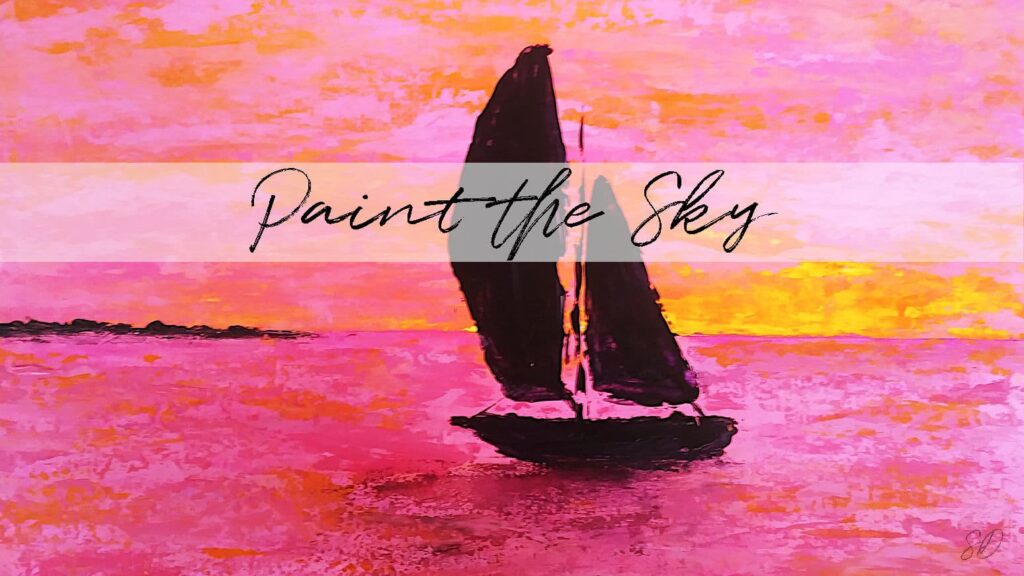
The very first thing I always do is paint the sky. You want to have that all sorted so you know what colors you’ll need for the water reflections.
Painting the Sky Help:
- Use your lightest colors near the horizon and darken as you paint up toward the top edge of the canvas
- If you’re doing a sunset/sunrise and are using a lot of different colors, think about the color wheel and which color is opposite from the one you’re using. For example, if you are planning to use yellow near the horizon but you want to add some purple higher up in the sky, make sure you don’t blend those two colors together or you’ll get mud.
- I don’t worry too much about the horizon line at this point because you can always cover any parts that aren’t perfectly straight with a distant piece of land
TIP #2: The Horizon Line
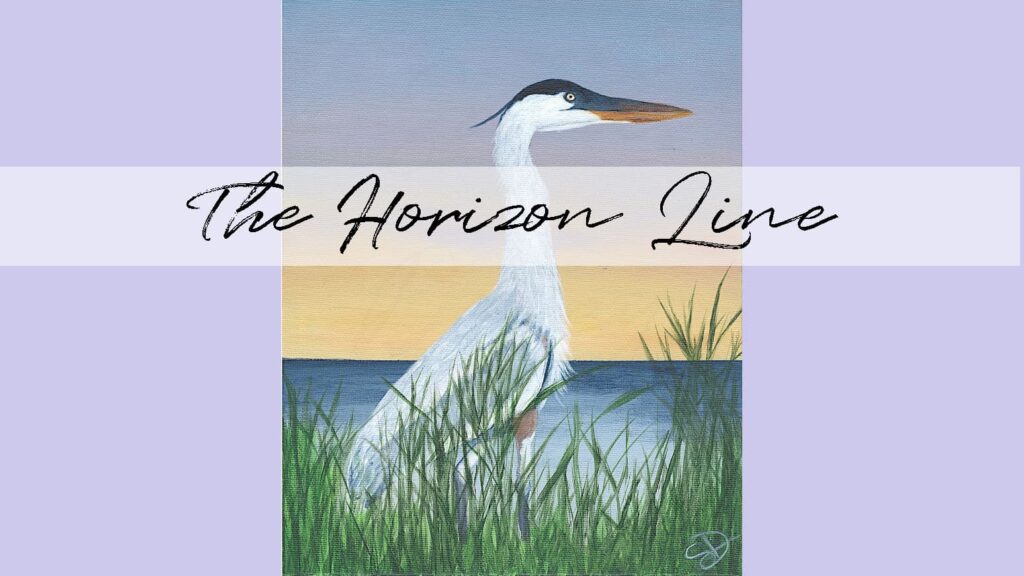
A super straight horizon line is key when you paint the ocean. It creates an unmistakable division between the sky and the earth even when your sky and ocean colors are muted.
Horizon Line Help:
- You can use a T-square or a ruler and a piece of chalk or a watercolor pencil to draw your line
- You can also use painter’s tape (this is my preferred method so I don’t have to be super careful when working near the horizon
- Make sure your sky is completely dry before using tape
- If you make a boo-boo, you can cover it with a distant piece of land but make sure the bottom edge of the land is super straight
TIP #3: Brush Strokes Matter
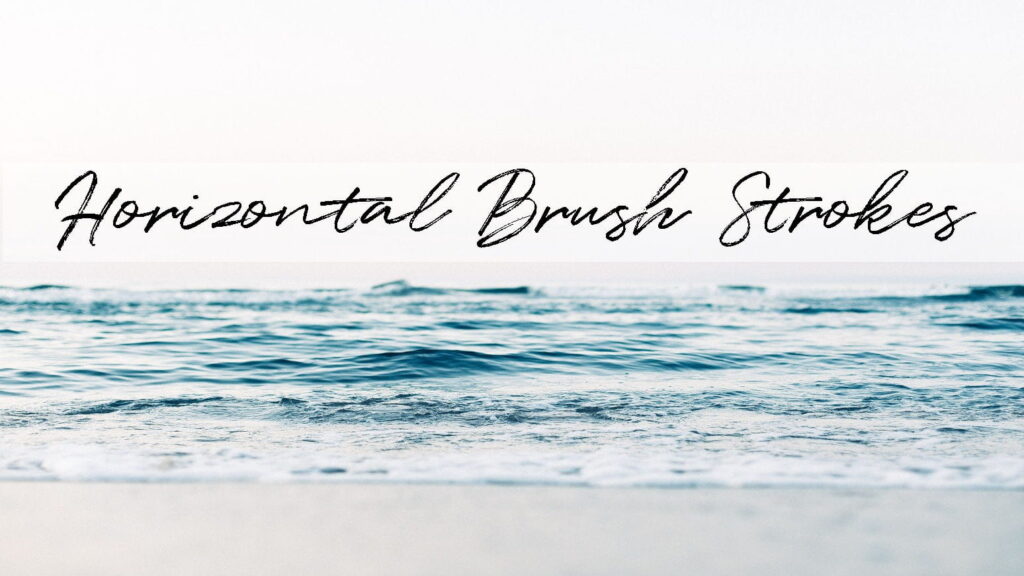
When you paint the ocean, get into the habit of painting horizontally. You can have slight angles, like when you paint cresting waves or shimmery reflections, but you just want to avoid harsh vertical lines. Unless you’re dealing with a dramatic crashing wave, most angles are very subtle. Painting the base color, horizontally, isn’t too hard to remember but, when you start adding waves, things can go coo-coo very quickly! Best to just make it habit from the get go.
TIP #4: How to Create Depth/Distance
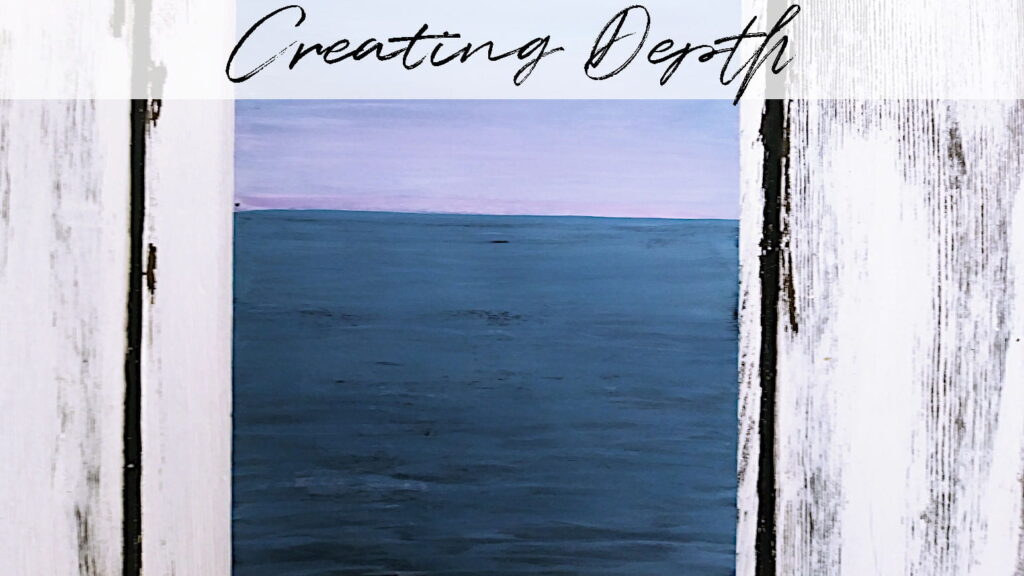
To create depth to your painting, your waves should be larger in the foreground and become thinner and shorter as you paint toward the horizon. Just remember, waves can be all different sizes but they’ll always get smaller and less defined as they fade into the distance.
Painting Waves Help:
- Light and shadow are going to be really important so make sure you’ve figured out what time of day it is in the painting so you know how bright your reflections need to be or how deep your shadows should be
- All waves have some kind of movement to them so don’t make them stick straight in the foreground
- Each wave will have a shadow and multiple highlights
TIP #5: Simple Shapes
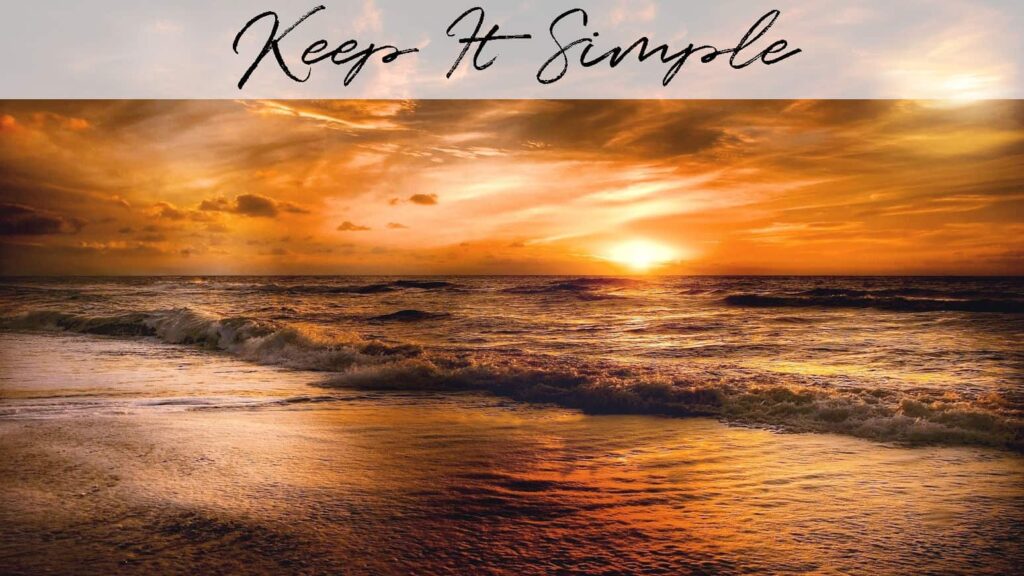
When you first learn to paint the ocean, make sure that your reference photo is well defined and doesn’t have too many extra things going on. Save the boats, seagulls, fishermen, and whales for later when you’ve had practice and feel confident in your wave technique.
Make sure, if you use a photo from the web as a reference, that the image is free from copyright issues. There are tons of really great websites out there where you can find beautiful ocean scenes. Feel free to check out my article with links to my favorite top sites with free images to paint.
TIP #6: Reflections
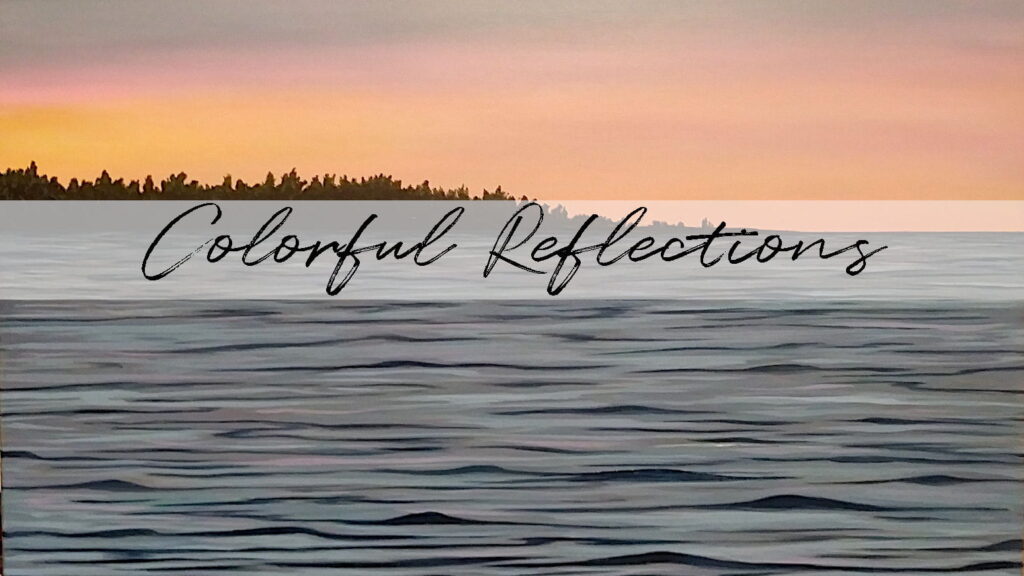
If the sky in your reference has lots of different colors, chose a slightly more muted (duller) and darker mid-tone shade from the sky to use as the base color of your water.
For example, in the image above, you can see that I have a very early morning sky with pale yellow near the horizon, some pink, a deep blue that leans toward purple, and then a few bits of a dusty purple. I chose to go with the deep purpley blue as my base color for the water.
Sky Reflection Help:
- If you want to paint the ocean realistically, don’t go too crazy when you start adding the sky colors to the water. Less is more
- Remember that all colors you add to the water should be slightly duller than the colors in the sky. This is because, although water is reflective, it has depth and you want to show that in your painting
- Adding the fun colors from the sky should be painted just after you paint the ocean in your base color and before you start adding waves
TIP #7: YouTube Tutorial Recommendations
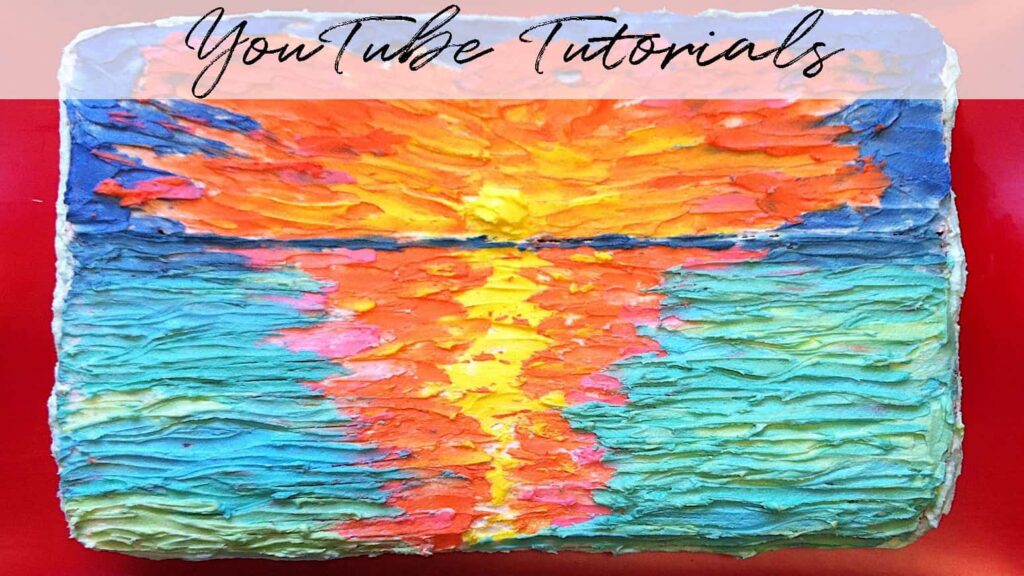
There are a gazillion amazing YouTube tutorials to teach you how to paint the ocean. You can find calm waters, crashing waves, dramatic stormy seas, and everything in between.
Where to Start:
- Katie Jobling – Painting Tutorial Acrylic Ocean for Beginners – This tutorial features a beautiful turquoise crashing wave and a simple blue sky
- Emily Mackey Art – Ocean Sunset (Beginner to Intermediate) – Emily really shows you easy steps to paint the ocean and creating gently cresting waves
- The Art Sherpa – Easy Sunset Painting for Beginners Cotton Candy Clouds on Beach – Cinnamon Cooney shows you how to paint the ocean with a colorful sunset sky over turquoise water
- Painting With Jane – Palette Knife Seascape Step by Step Acrylic Painting on Canvas for Beginners – If you’re looking for a tutorial using palette knives, this is the one for you! Jane’s painting features stormy skies over a dramatic ocean
- Angela Anderson – Sand Dunes Beach Sunset Seascape – Acrylic Painting LIVE Tutorial – This tutorial by Angela is so tranquil. If you want to paint the ocean with a calming vibe, I think you’ll really like this one
I hope these tips help you to gain confidence when you paint the ocean. Lots of practice and honing your own skillset is the key to creating a beautiful seascape you can be proud of. Remember to have fun while you learn and if you end up being less than thrilled with your painting, take a moment to make a note of what you liked and what you need to work on, and then paint over it and start again! Let me know in the comments below, what do you find most difficult when you paint the ocean?
Related Articles:
- How to Blend Acrylic Paint
- Make your own Turquoise Paint
- Funky Flamingo Painting Tutorial
- How to Paint a Sunset
- How to Paint the Moon
- Tons of Acrylic Painting Ideas to Try
- How To Paint Clouds

Meet Sara, a seasoned veteran in the world of art. With a knack for mixing paints to unveil breathtaking new hues, she’s adorned countless commissions and independently captivated art enthusiasts with her creations. Having spent over a decade immersed in the realm of art gallery management, Sara’s insight into the intricacies of the art scene shines through her work.
But don’t let her impressive résumé fool you – Sara’s approach to art is as lively as her palette. Known for her wit and humor, she infuses her passion for painting with a playful spirit, making every stroke a delightful adventure. As a dedicated mentor, she’s committed to guiding her fellow artists towards success, always staying ahead of the curve with the latest techniques and trends.

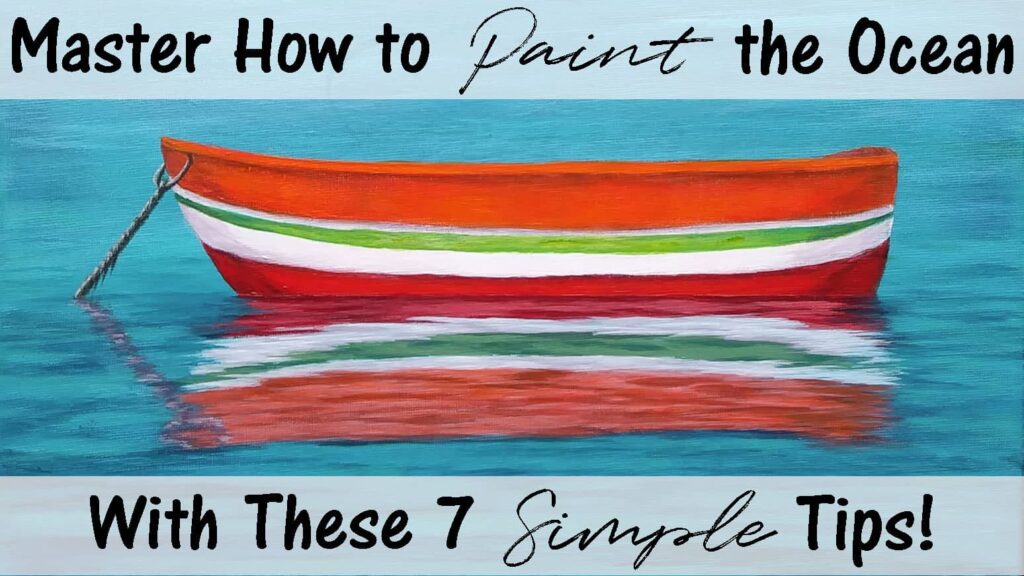
I can’t wait to try these tips and tricks! Looking to transitioning from rock painting.
Thanks Sara!
Awesome! If you’ve been rock painting, I think you’ll find it easy to switch. Paint on, my friend!